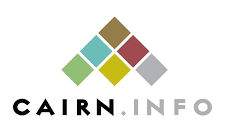Consignes aux auteur·rice·s
Tout article soumis à la ROR doit respecter les règles exposées dans cette note. Celles-ci visent à faciliter le processus éditorial à garantir l’exigence scientifique de la revue. Le Comité de rédaction se réserve le droit de rejeter les articles non conformes.
SOUMISSION D’UN ARTICLE
Les articles doivent être envoyés par mail à Alexandre Antolin à l’adresse suivante : [email protected]
Les articles doivent être accompagnés d’une courte lettre (cover letter) figurant dans le corps du mail. Celle-ci doit fournir les informations suivantes :
- 1re soumission : titre de l’article, nom des auteur·rice·s, affiliations, conflits d’intérêts éventuels, brève justification du choix de soumettre à la ROR et toute autre information susceptible de faciliter le processus éditorial.
- Re-soumission suite à modifications : titre de l’article, nom des auteur·rice·s, affiliations et brève description des principales modifications.
MANUSCRIT
La ROR publie des articles en français et en anglais. Toutefois, en ce dernier cas, la publication est subor-
donnée à la présentation d’une preuve de copy-editing (ex : une facture) engagé aux frais de l’auteur·rice. Le Comité de rédaction se réserve le droit de refuser un article non revu et corrigé.
PRÉPARATION DU MANUSCRIT
La 1re page du document doit impérativement contenir les éléments suivants : titre, résumé, mots clés, informations sur les auteur·rice·s (nom, prénom, affiliations, mail professionnel, mail de contact si différent, etc.). La 2e page du document doit impérativement contenir les mêmes éléments, mais sans aucune information sur les auteur·rice·s. La 3e page concerne le corps du texte.
TITRE
Tout article doit être accompagné d’un titre en français et en anglais. Le titre facilite le référencement et résume le contenu de l’article. Il doit donc être accrocheur, synthétique et reprendre les termes clefs de l’article (ex : en matière de théorie, de méthode ou de terrain). Les titres longs ou abscons sont à proscrire.
RÉSUMÉ
Tout article doit être accompagné d’un résumé en français et en anglais long d’environ 150 mots. Il donc indiquer de manière claire et concise le sujet, la problématique, les notions, les méthodes, les principaux résultats et les contributions centrales de l’article.
MOTS-CLÉS
Tout article doit être accompagné de 5 à 8 mots-clés en français et en anglais. Ils servent à l’indexation et au référencement des articles. Ils doivent couvrir les différents aspects de l’article (théorie, terrain, méthode, etc.) et faire écho à ceux utilisés par les auteur·rice·s du champ.
TEXTE
Le corps du texte ne doit pas excéder 10 000 mots (hors bibliographie, tableau, annexe, etc.). Le Comité
de rédaction se réserve le droit de rejeter tout article trop long. Il doit être rédigé dans le respect des règles de grammaire et d’orthographe. Il doit être structuré de manière cohérente en parties
de 1er, 2e et 3e niveau. Les intertitres doivent être clairs, synthétiques et percutants.
Il doit respecter les règles de présentation suivantes :
- Marges : 3,5 cm en haut, en bas, à gauche et à droite
- Interligne : 1.5 cm
- Corps de texte : Times New Roman, 12 pts, justifié
- Intertitre niveau 1 : Times New Roman, Petites majuscules, gras, 14 pts, aligné à gauche
- Intertitre niveau 2 : Times New Roman, gras, 14 pts, aligné à gauche
- Intertitre niveau 3 : Times New Roman, italique, 12 pts, aligné à gauche
- Titre tableaux, figures, images : Times New Roman, gras, 10 pts, aligné à gauche
TABLEAUX, FIGURES ET IMAGES
Les tableaux, figures et images doivent être titrés et appelés dans le texte.
Ils doivent figurer à la fin du texte (après la bibliographie) en suivant leur ordre d’apparition. Dans le même temps, l’auteur·rice doit mentionner dans le texte l’endroit idéal de leur insertion (ex : « Insérer tableau 1 ici »). L’emplacement est néanmoins susceptible d’être modifié du fait des contraintes de mise en page.
L’auteur·rice a la responsabilité d’entreprendre les démarches relatives à l’obtention des éventuels droits
de reproduction et de diffusion des tableaux, figures et images. Le Comité de rédaction ne peut en être tenu responsable.
RÉFÉRENCES ET BIBLIOGRAPHIE
La bibliographie doit commencer sur une page séparée du corps de l’article. Elle doit être titrée « Bibliographie ». Toute référence citée dans le texte doit être reportée dans la bibliographie (et réciproquement). L’utilisation d’un logiciel de gestion de références bibliographiques est fortement recommandée.
Les références bibliographiques doivent être précises. Les citations comprenant plus de trois références en une seule parenthèse sont à éviter. L’indication des numéros de page est indispensable lors des citations et, d’une manière générale, recommandée. Les numéros de page suivent la date de publication dont ils sont séparés par deux points (ex : « Ainsi, comme l’écrit l’Auteur·rice (2004 : 20), la RSE est… »).
En bibliographie, les références doivent être listées selon l’ordre alphabétique du 1er auteur·rice comme suit :
Article de recherche : Le Moigne, J., 2012. La double hélice de la gouvernance des « communs ». Revue de l’Organisation Responsable, 7: 93-97. [DOI] https://doi.org/10.3917/ror.072.0093, mis en
ligne le 01/10/2015, consulté le 03/04/2024.
Article de presse (sans auteur identifiable) : Le Monde Initiative. 2004. Handicap, quelques avancées. Juillet-Août : 3.
Chapitre de livre : Berg, N.A. 1973. Corporate role in diversified companies. In B. Taylor & I.
MacMillan (Eds.), Business policy: Teaching and research: 298-347. New York: Wiley.
Communication : Wall, J.P. 1983. Work and nonwork correlates of the career plateau. Paper
presented at the annual meeting of the Academy of Management, Dallas, TX.
Livre: Kahn, R.L., & Boulding, E. (Eds.). 1964. Power and conflict in organizations. Glencoe, IL: Free
Press
Thèse : Hereng, H. 2003. Réseaux d’observation sociale. Caractérisation et performance. Thèse non publiée de doctorat de gestion, Université des sciences sociales, Toulouse







